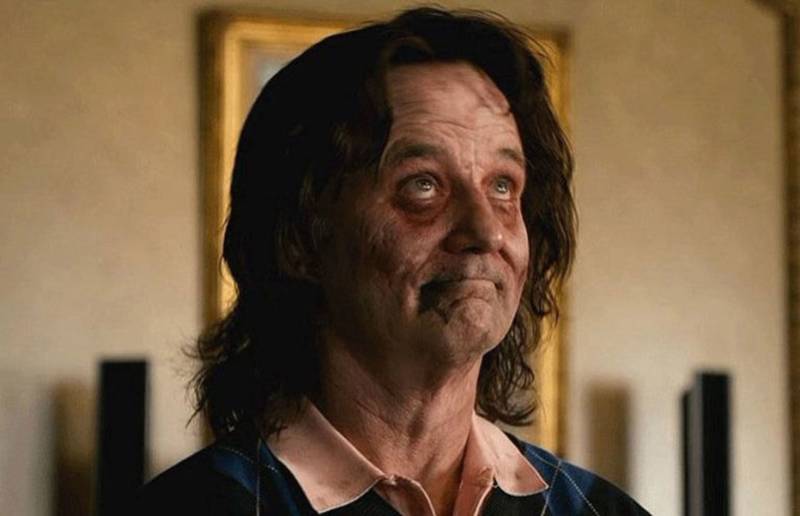Remember in 2009's Zombieland, when the gang went to Bill Murray's house to get some rest, only to find him alive and well and in full zombie make-up? And then, after some casual Ghostbusters cos-play, Columbus confused Murray for a real zombie and accidentally killed him? Not only was it probably the greatest cameo in recent movie memory, but in the process of filming it, the real-life Murray apparently also got bitten by the zombie bug.
This year, not only is he re-appearing as himself in the Zombieland sequel, Murray is also starring in The Dead Don't Die, alongside Selena Gomez, Chloë Sevigny, Steve Buscemi and Adam Driver. As zombie reckonings go, this one—written and directed by Jim Jarmusch—looks particularly epic.
That Bill Murray is showing up in two zombie-comedies this year isn't particularly surprising, all things considered. This very niche but unrelentingly popular movie category has had an unstoppable run since Shaun of the Dead ambled onto our screens in 2004. Like Simon Pegg's TV show Spaced before it, Shaun blended action and dry humor with smart references to old movies (Dawn of the Dead, Night of the Living Dead and directors John Landis and Lucio Fulci all got nods). Along the way, the film accidentally invented a new genre—the zom-com (although, technically, it called itself a "rom-zom-com").
Long before Shaun, horror lovers had known the joy of combining the undead with comedy. It started in 1978 with Dawn of the Dead, a zombie horror movie that used bouts of humor to break the tension. Three years later, American Werewolf in London followed Dead's example, using Jack—David's slowly rotting, undead best friend—almost entirely as a vehicle for comic relief. 1985's Return of the Living Dead, '88's Return of the Living Dead Pt. 2 and 1992's Dead Alive (a Peter Jackson movie!) were all self-consciously ridiculous—more farce than frightening.


